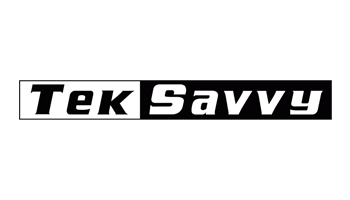Account Reconciliation for eCommerce – the ReconArt experience
Account reconciliation finds its place in any and every accounting practice, but for some business models it has become a central issue. Transactional industries stand out as the most obvious example, where huge volumes and speed of exchange operations are typical characteristics on top of cash amounts turnover.
Retail business and the e-commerce segment in particular exhibit a boom as consumer confidence strengthens. Online retail platforms and the varied options for payment and shipping provide additional incentives for clients, triggering their purchase decisions. Ultimately, e-commerce has fulfilled the futuristic promise of instant access to a myriad of affordable consumer goods and globally inclusive market experience.
Sensible merchants foresee customer needs and complement their product offers with a number of enticing collateral services – from seasonal discounts, gift cards, trial periods and free returns, to flexible payment options and stripped shipping costs. The competition is fierce and marketing inventions push vendors to develop intricate distribution networks. This is a challenging undertaking involving more and more business partners.
Common challenges
From merchants’ standing point, the rising complexity of the retail ecosystem exacts robust internal accounting controls to stay on top of cash flows, even more so as the majority of transactions take place in a digital environment. The delivery of one single online order requires the authorization and/or action of at least four parties besides the customer and the merchant themselves – their banks, the payment processor / credit card issuer, the parcel delivery company.
The attributed transactions may be multiplied by two in cases of cancellations, refund requests or glitches down the supply chain. Some of the intermediaries incur fees for their services, which are reflected in the total sum and need to be properly discerned / sorted out. Let’s not forget that cross-border trade also means currency conversions and the underlying forex differences, plus customs duty and tariffs levied in some cases.
Judging from our experience with ReconArt clients, even the small to medium-sized e-commerce vendors deal with several thousand transaction daily. For global market leaders, numbers soar in millions, with sharp variations in consumer activity around holiday campaigns, for example. At these volumes, escalating daily inputs of data simply cannot be handled manually in a timely and accurate manner. Monitoring the frequent transaction status updates and clearing them one by one is a hopeless endeavor.
Legacy tools employed in the daily reconciliation tasks (MS Excel, overwhelmingly) give little room for scaling up the business. Beyond a certain threshold, regularly exceeded by retailers, transactional matching in spreadsheets is virtually impossible. While comparing amount totals, important details fall through the cracks and the root cause for the mismatch (which could range from time lags to fraud attempts) is not properly investigated. Thus, lagging behind with reconciliation can have a detrimental impact on both client satisfaction and financial health.

How we help our clients
ReconArt has an extensive experience implementing its reconciliation solution for small and big e-commerce client alike. Some of them propel sales via proprietary or third-party physical locations as well, which is an additional dimension. In general, the most typical case is three-way-reconciliation between payment processors (such as PayPal, AMEX, Barclays, Chase Paymentech, Adyen, Beanstream, Worldpay, and Skrill), banks, and internal ERP systems (Oracle NetSuite, MS Dynamics), which is performed in two steps (processor-to-bank & processor-to-internal system).
Data is sourced and uploaded automatically in the ReconArt™ environment via predefined import templates. The configurable scheduling engine allows grouping the reconciliation tasks in stacks. The outstanding items produced as a result of the matching iterations can be efficiently investigated down to transaction level by fewer users. Configurable cross-sections of bulk sums display and arbitrate currency exchange differences and acquirer charges (payment processor generated) at both cash and transaction levels. The built-in exceptions classification functionality also assists the users in determining the most common cause of mismatch – transaction timing, posting errors, void-to-issue operations, etc.
In ReconArt, all that occurs in a single database with individual user accounts, simple browser access and granular audit trail, instead of scattered in numerous documents and repositories with doubtful compliance value. The reconciliation reports output (cash book journals, account balance differences, write-offs, outstanding items, etc.) feed the core ERP solution. Following the successful ticking out of matched transactions and approved exceptions, journal entries can be posted in the GL. The financial period close module completes the accounting cycle.
Our e-commerce clients achieved automation and streamlining of the reconciliation process without stuff ramp ups. They leverage ReconArt™ without a disruptive effect on their day-to-day business. The users have quickly adapted to the intuitive interface during the training. Dedicated ReconArt specialists worked with them to configure the system during the implementation phase and provide post-implementation support. Once our clients have full command of the system, they proactively onboard new processes on their own. The benefits – enhanced confidence, self-reliance and visibility.
It is important to emphasize that in ReconArt the know-how and lessons learned are persistently invested in our solution upgrade efforts so that all our clients can benefit from them. We evolve as our clients evolve and we eagerly learn from each other. Zero compromise on that.

 follow our blog
follow our blog






















 Quick response
Quick response

